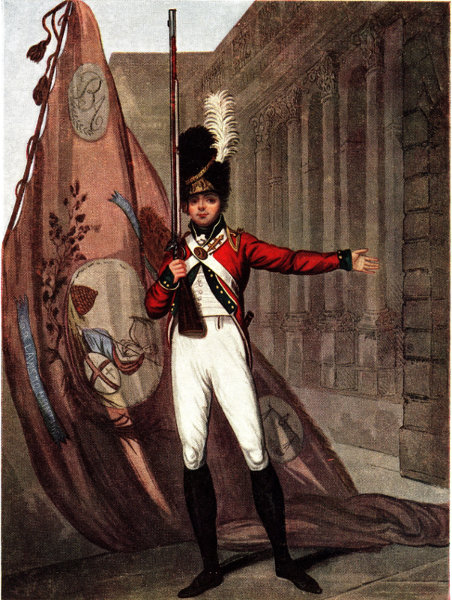
ii
THE HISTORY OF THE PRINCE OF WALES’ OWN CIVIL SERVICE RIFLES
iii

To William Manning Esqr. M.P. Lieutenant Colonel Commandant,
iv
By the courtesy of the Governor and Company of the Bank ofEngland, the possessors of the original print.
The uniform is similar to that worn by the Somerset HouseVolunteers of the period.
London: Published, August 30th, 1804, by
John Wallis, Jun., 16, Ludgate Street.Frontispiece.v
THE HISTORY OF THEPRINCE OF WALES’ OWNCIVIL SERVICE RIFLES
PRINTED BY WYMAN & SONS LTD., FETTER LANE, E.C.,
FOR P.W.O. CIVIL SERVICE RIFLES,
SOMERSET HOUSE, STRAND
1921vi
vii
TO THOSECIVIL SERVICE RIFLEMEN
WHO LAID DOWN THEIR LIVES
IN THE GREAT WARviii
ix
NOTE BY THE EDITOR
These pages have been put together under pressure of thedesirability of placing their contents without further delay inthe hands of a public virtually limited to Regimental memberspast and present, their relatives and friends. They do not aimhigher than setting on record the unvarnished chronicles ofseveral generations of volunteers who have never yielded placeto any in their pride and love of regiment.
Before the close of the last century the story of the Regiment’sthirty years’ existence had been written by the officer who to-dayhas been the right hand of the Editor in the task of bringingthe record down to the year of the War. The latter has to thankColonel Merrick for giving up much of his time to this object,and for allowing a reprint of the earlier portion.
Captain Bell was good enough to make himself responsible forthe tale from the year 1909 to 1914. Major Kirkby has kindlygiven his supervision in preparing certain tabular statementswhich are found as appendices. Yet this book would never havereached the printers’ hands but for the initiative shown byCaptain Davenport as regards the narrative of the first Battalionin War. His achievement prompted the search for an authorwho could and would do the same for the widely ranging storyof the movements of the second Battalion. Into this gapstepped Major Benké who, in a short space of time delivered thecompleted task. It will be agreed that both these officers, aidedin some parts by collaborators, have produced a readable andhuman account of those events of which they can speak at firsthand, made clearer by the excellent sketch maps which accompanythe narratives of oper